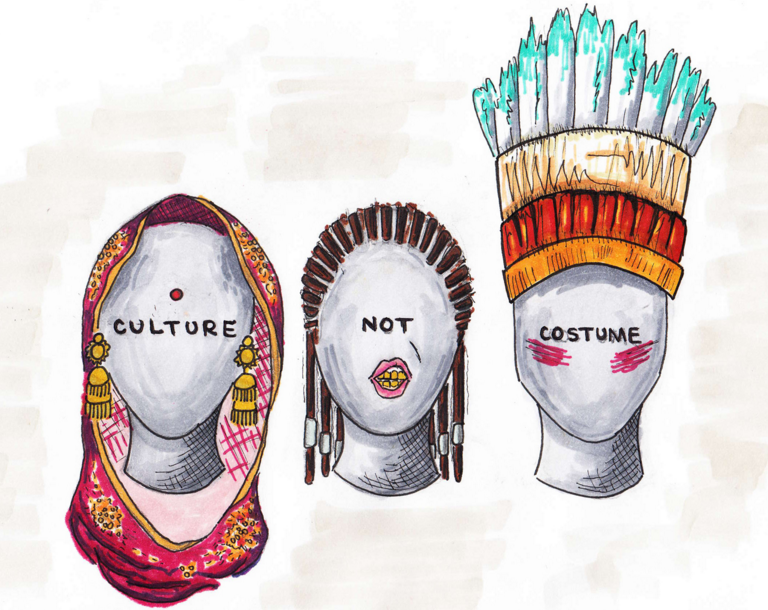In a time of greater cultural consciousness, what is our responsibility to model critical awareness – even at Halloween?
When I taught high school math, every Halloween I would pretend that I called in sick and showed up as my own substitute teacher; I’d arrive as the worst caricature of a math teacher. His name was Mr. Bloomer. He wore the same outfit every year: a standard solid, button-down, short-sleeved shirt; oversized pants, belted tightly above my belly button (and above my ankles); white gym socks protecting my feet from my stiff dress shoes; a tool-filled pocket protector; and black horn-rimmed glasses adorned with a non-matching band-aid to hold them together.
Every year I came, not only dressed as Mr. Bloomer, but actually AS Mr. Bloomer – intent on staying in nerd-character the entire day (FYI: I consider “nerd” a positive term). It was always the same story – my freshmen students were so amused by the character, that by the end of the class they were acting as if I really were a substitute – and one with less than the skill needed to maintain a well-managed classroom. Inevitably, there would be that moment when Mr. Bloomer would have to lower his lens-less glasses, look sternly at the playing students and remind them, “You realize that I actually know Mr. Peters personally, don’t you?” Each year, I felt a little guilt and a little more joy as students quickly regained decorum with an obvious a-ha.
I actually never really enjoyed dressing up for Halloween until I taught. My responsibility to develop community with my students motivated me to put aside my otherwise sense of self-consciousness and to model a willingness to have fun and laugh at myself. As my own awareness has grown about my role as a white, anti-racist educator, I have come to believe that we have a larger responsibility to our students to consider continuously and critically all the invisible messages and micro-lessons we provide in even when we are trying to engage in the fun of a holiday.
One Halloween, I recall entering a colleague’s school and seeing the white principal dressed to the nines with Halloween spirit. His costume was that of a Native American Indian, complete with flowing feather headdress. Students seemed to freely engage with him, appreciating his costume and joking with him. The population of his student body was 95% Latina/o – the vast majority of Mexican descent. A Latino teacher approached me, fuming. He asked for support to identify an effective way to approach his supervisor and discuss the implications of appropriating artifacts of his and his students’ culture and traditions and equating them with a “costume,” reinforcing a historic agenda of dehumanization. He noted that during National Hispanic Heritage Month, which ended on October 15, many teachers struggled to find ways to integrate connections between their students’ heritage and their content areas. Now he was observing the school’s instructional leader, with what seemed more seamless effort, invisibly – but so visibly – communicate internalized and devaluing beliefs about the very culture and traditions that were espoused to be understood just two weeks earlier.
A year later, while meeting with a Latina district leader, she shared her plans for Halloween. She wanted to dress as a woman of color who was appropriating white culture. Curious, I inquired what her costume would look like. Her ideas, plentiful, will be left off this reflection for others to ponder (but, to tell the truth, they were brilliantly reflective). She admitted that she sought an authentic way to communicate her disapproval of a litany of similar experiences from the other side through an experiential manner that might accelerate the learning of those like the school principal.
A few weeks later, I asked her how her Halloween plans went, and she informed me she had not gone through with them. She explained that a number of her white friends had negative reactions when discussing her idea, and in the end she worried about how she might be received by strangers if she went through with her plans. I wondered then, and continue to wonder:
What life experiences influenced the white principal’s decisions and actions given his context?
What life experiences influenced the Latina district leader’s decisions and actions?
What experiences might support each of them to understand each other’s intent and impact?

